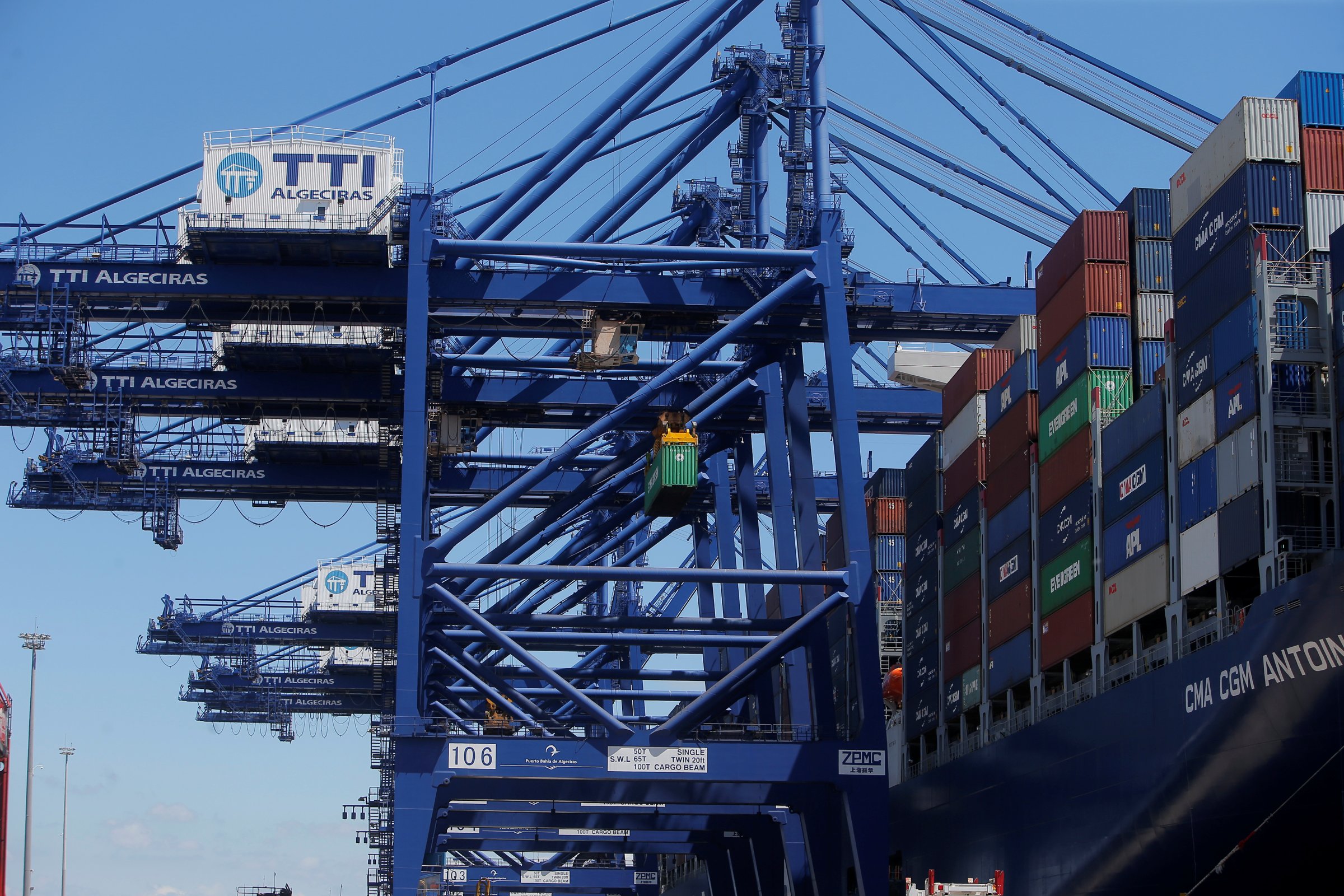
The numbers are not looking good for a president who has made reducing the U.S. trade deficit one of his main economic goals.
Worse still, signs are emerging that President Donald Trump’s trade wars are starting to hit economic growth, not just at home but around the world.
New data out Wednesday showed the U.S. trade deficit in July widening at its fastest rate since 2015 as monthly deficits with China and the European Union both hit new records. In the year so far, the U.S.’s overall goods and services deficit is up by $22 billion, or 7 percent, versus the same period last year.
The data coincides with Trump’s moves to escalate his battles with China and efforts to badger Canada into signing on to a new Nafta, highlighting what economists have argued is the incongruity of his trade policies. Even as he launches his battles in the name of reducing the U.S.’s imbalances, he has been causing the overall deficit to grow by increasing public spending and encouraging domestic investment.
“The policies of this administration are policies that may not have been designed to increase the trade deficit, but that is their effect,” said Philip Levy, who served on President George W. Bush’s council of economic advisers.
Policy Distortions
Also apparent in the trade data are some of the distortions that Trump’s policies have been fueling and how they may be helping mask the long-term impact of his trade wars.
While soybean farmers are widely seen as one of the likely victims of a trade war with China, for example, a surge in exports of soybeans to get ahead of new tariffs helped boost U.S. GDP growth in the second quarter. In the first seven months of this year, the value of U.S. soybean exports actually increased by more than 40 percent, or $5.7 billion, versus the same period last year, according to the data released on Wednesday.
Those distortions are likely to be temporary. And that is why many economists believe U.S. GDP growth may have peaked at 4.2 percent in second quarter, with trade likely to be a drag on growth in the months to come.
Modest Drag
Andrew Hunter of Capital Economics said the trade data released on Wednesday indicated that after boosting GDP figures in the second quarter, net exports would subtract from it in the second half. In the third quarter, he predicted, net trade would subtract more than a percentage point from GDP growth while the recent surge in the dollar suggested that trade could be a “modest drag” in the fourth quarter too, even before the impact of tariffs starts to take hold.
Most economists argue against Trump’s characterization of the U.S. trade deficit as a reflection of the country’s profits and losses from trade. They also tend to cringe when people invoke reducing the deficit as a policy goal. The last time the U.S. trade deficit shrank significantly was in the aftermath of the 2008 crisis, which saw a collapse in global trade.
“Trade policy has very little direct impact on the overall trade deficit in the longer run,” said Mary Lovely, a Syracuse University economist. A new Nafta, for example, is unlikely to do much to change the trade deficit, despite the administration’s claims, she said.
On the other hand, if Trump’s trade wars eventually hit business confidence it would certainly affect the trade deficit. “Then we would see a reduction in the U.S. trade deficit, but of course with harmful effects on economic activity and employment,” she said.
The impacts of Trump’s growing trade wars aren’t limited to the U.S. They also have only just started to bite.
At the World Trade Organization, Robert Koopman, the chief economist, fears that we are beginning to see signs of a slowdown in global trade growth linked to the trade wars. That matters because just a few months ago trade growth was being cited as one of the main causes for a robust streak in the global economy.
Around the world, manufacturing surveys are beginning to show a dip in export orders. Air and ocean freight data are pointing to a slowdown. So too is a dip in auto production around the world, Koopman said in an interview.
More worryingly, he said, the world is already seeing a slowdown in foreign direct investment that’s likely to lead to a longer term impact on trade. It also is significant because, if anything, the Trump trade wars are only just getting started.
More significant damage looms ahead, Koopman said, with the Trump administration expected to proceed with a new wave of tariffs on $200 billion of China goods as early as this week and amid its threats to put national-security tariffs on imported cars and parts.
The real damage from those measures — and any retaliation from China and other U.S. trading partners — may not hit the global economy until the first quarter of next year, Koopman said.
“There’s been a lot more talk than action so far,” Koopman said. “The worry is when the action starts happening.”
More Must-Reads from TIME
- Donald Trump Is TIME's 2024 Person of the Year
- Why We Chose Trump as Person of the Year
- Is Intermittent Fasting Good or Bad for You?
- The 100 Must-Read Books of 2024
- The 20 Best Christmas TV Episodes
- Column: If Optimism Feels Ridiculous Now, Try Hope
- The Future of Climate Action Is Trade Policy
- Merle Bombardieri Is Helping People Make the Baby Decision
Contact us at letters@time.com